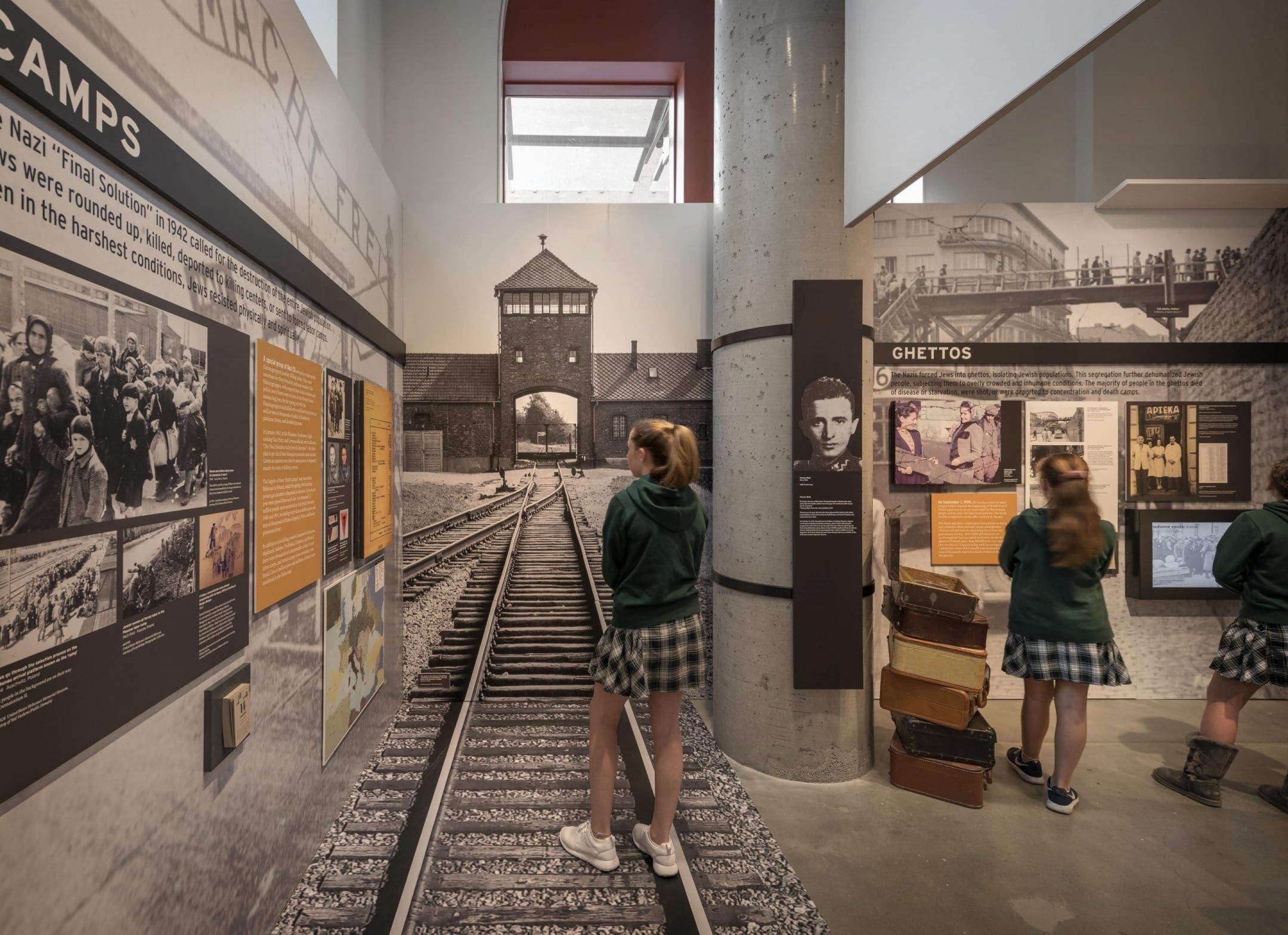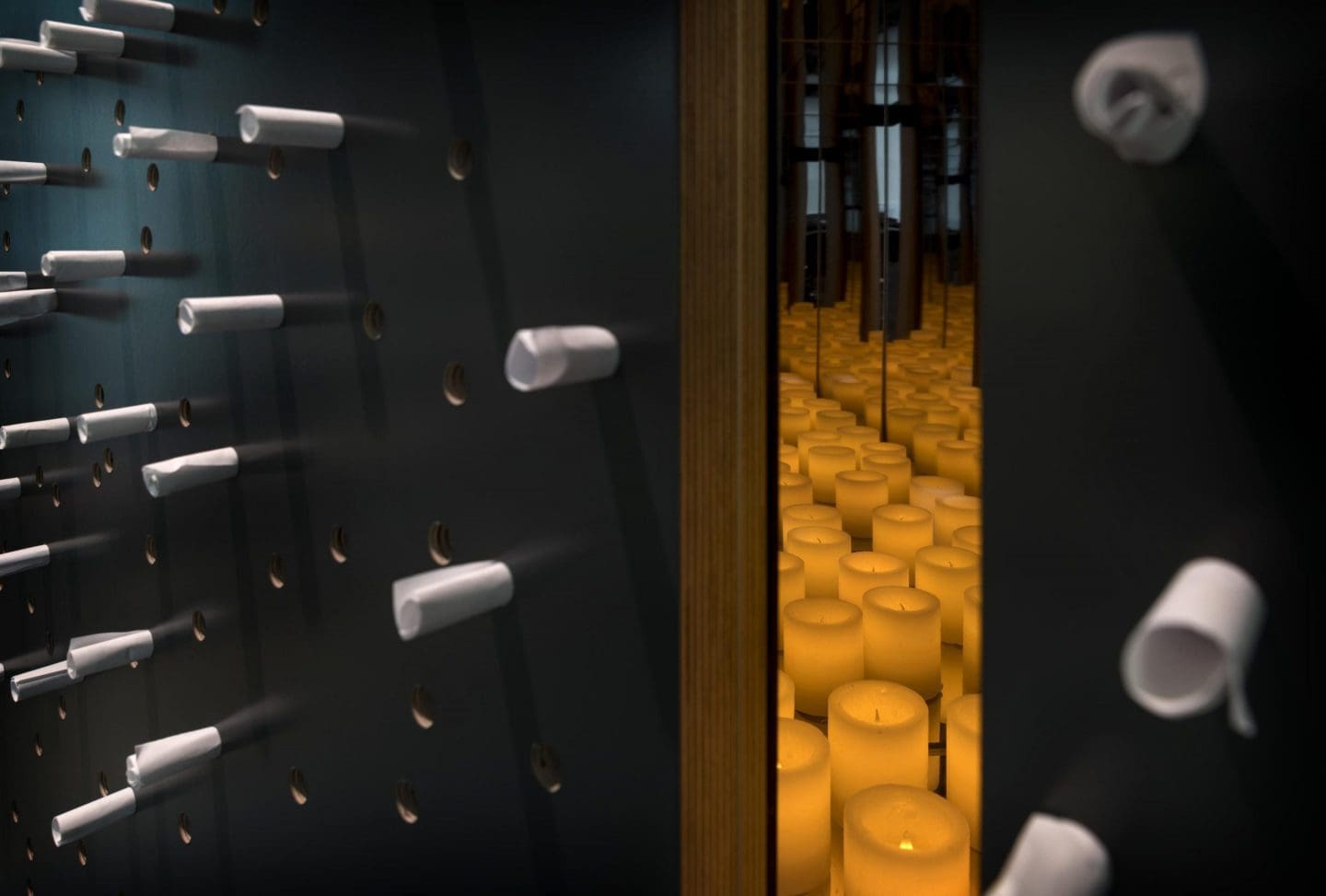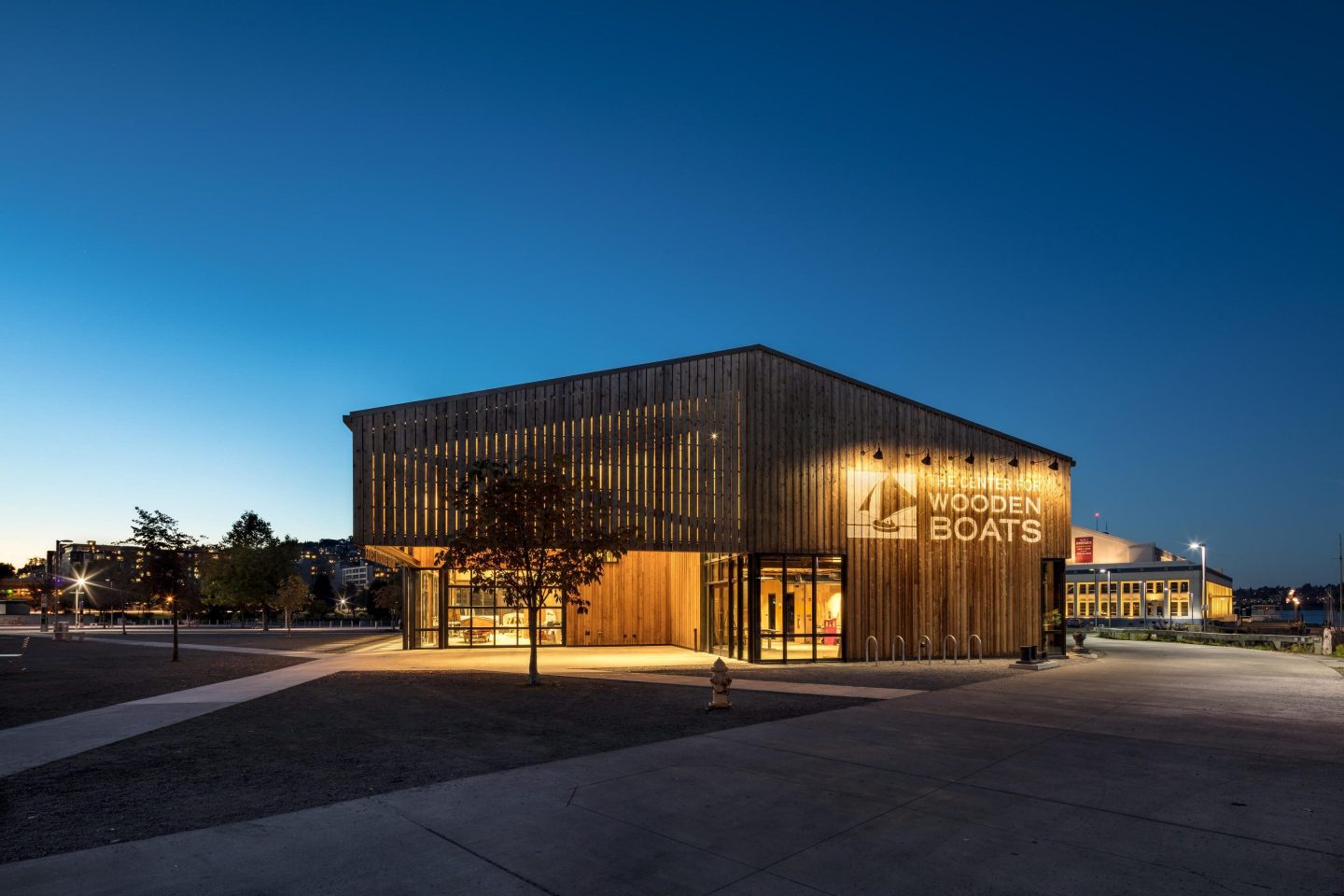Holocaust Center for Humanity
Seattle, Washington
-
Design Principal
Alan Maskin
Since 2015, Design Principal Alan Maskin has worked with Washington’s Holocaust Center for Humanity on exhibit designs and spatial layouts for their office and exhibition space in downtown Seattle. For its more than 17,000 annual visitors, who include students, teachers and the general public, the center teaches the history of the Holocaust through immersive, interactive exhibits that depict the experiences of several young survivors who made their home in the Pacific Northwest
The overarching goal of the exhibit design was to create memorable, focused experiences told through personal stories that inspire positive action and ensure the history of the Holocaust is not forgotten. The design capitalizes on unique architectural features of the building, including its double-height volume and monumental concrete columns to create immersive exhibits that educate through visitor interaction.
The visitor experience begins outside with large-scale window graphics featuring portraits of local Holocaust survivors as children, showing the faces of the people whose stories are told inside. Starting with a reflective moment for remembrance in the entry dome, the exhibits become increasingly experiential as visitors move through the 3,200-square-foot space. In the Anne Frank annex, a life-size hinged bookshelf opens to reveal a supergraphic of Anne Frank’s actual hiding place, and a supergraphic image of the train tracks to Auschwitz that begins on the floor continues up a wall to give the illusion of depth. Throughout, built-in elements and engaging graphics, as well as historic artifacts and replicas that visitors can touch, tell the human stories of the Holocaust in an efficient, powerful way, educating visitors about the dangers of intolerance and the difference each one of us can make.
I cannot imagine a design challenge more important than providing youth with a sense of hope and the belief that a better world is possible.Alan Maskin
Team
-
Design Principal
-
Project Manager / Project Architect











